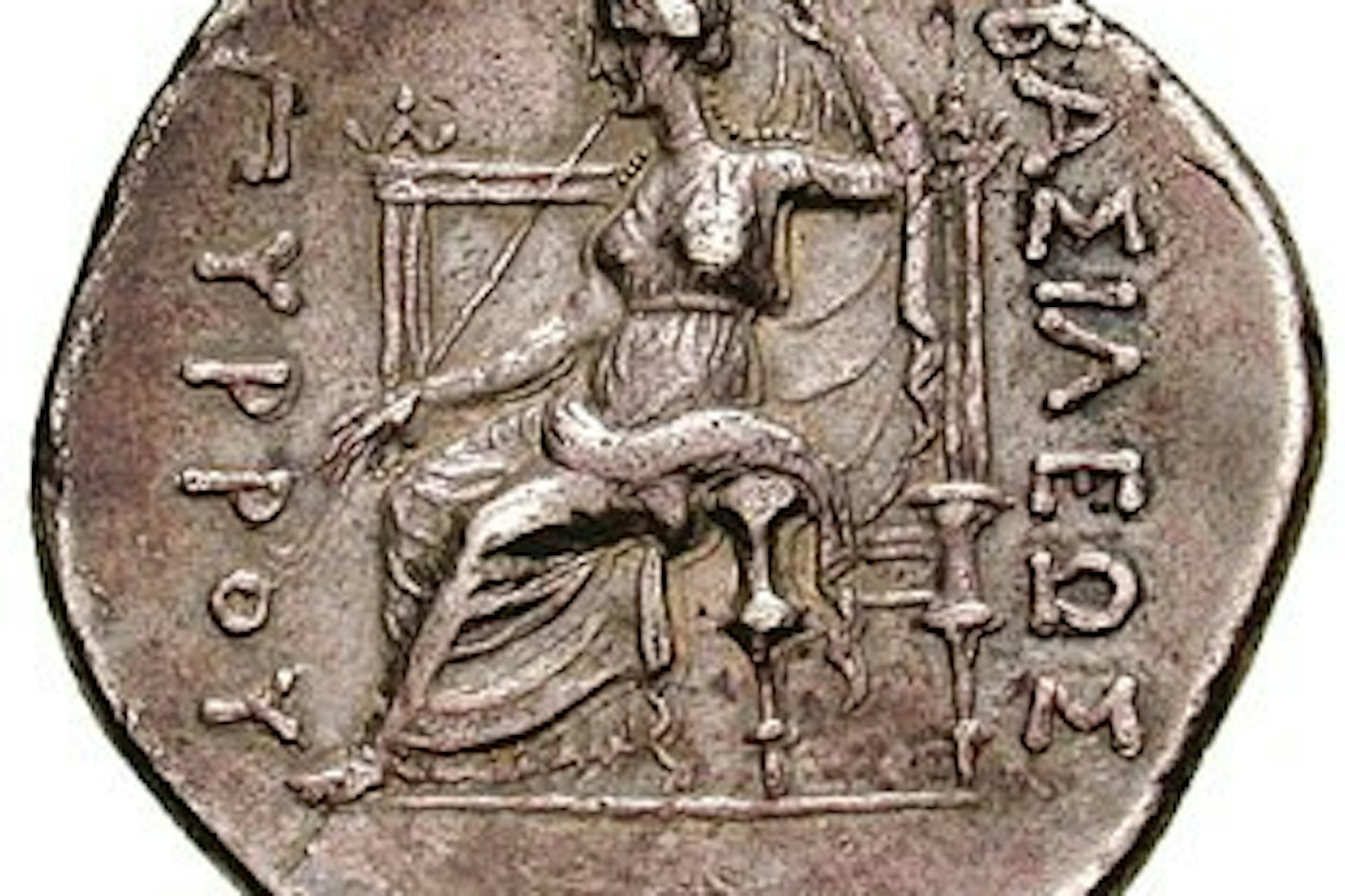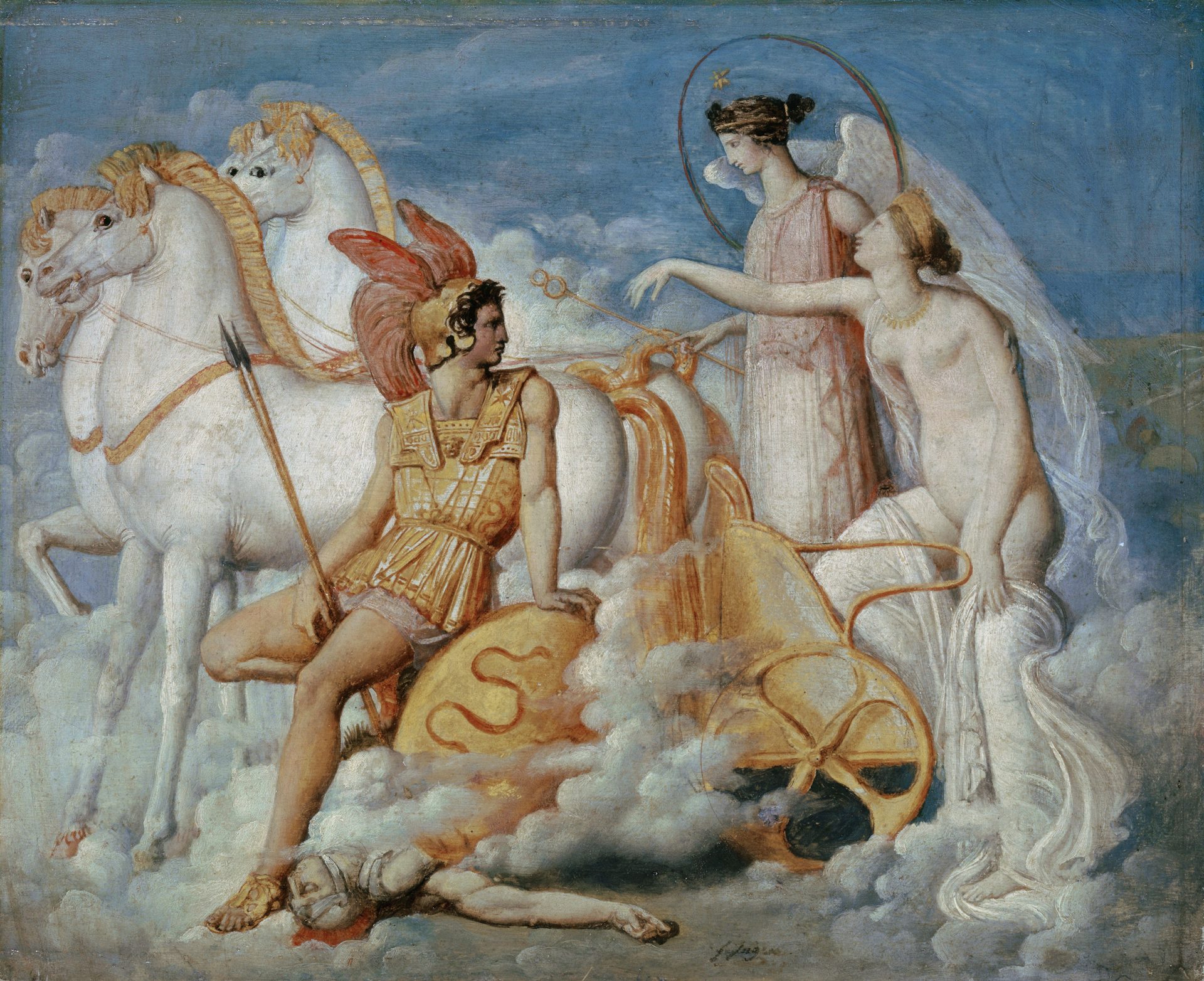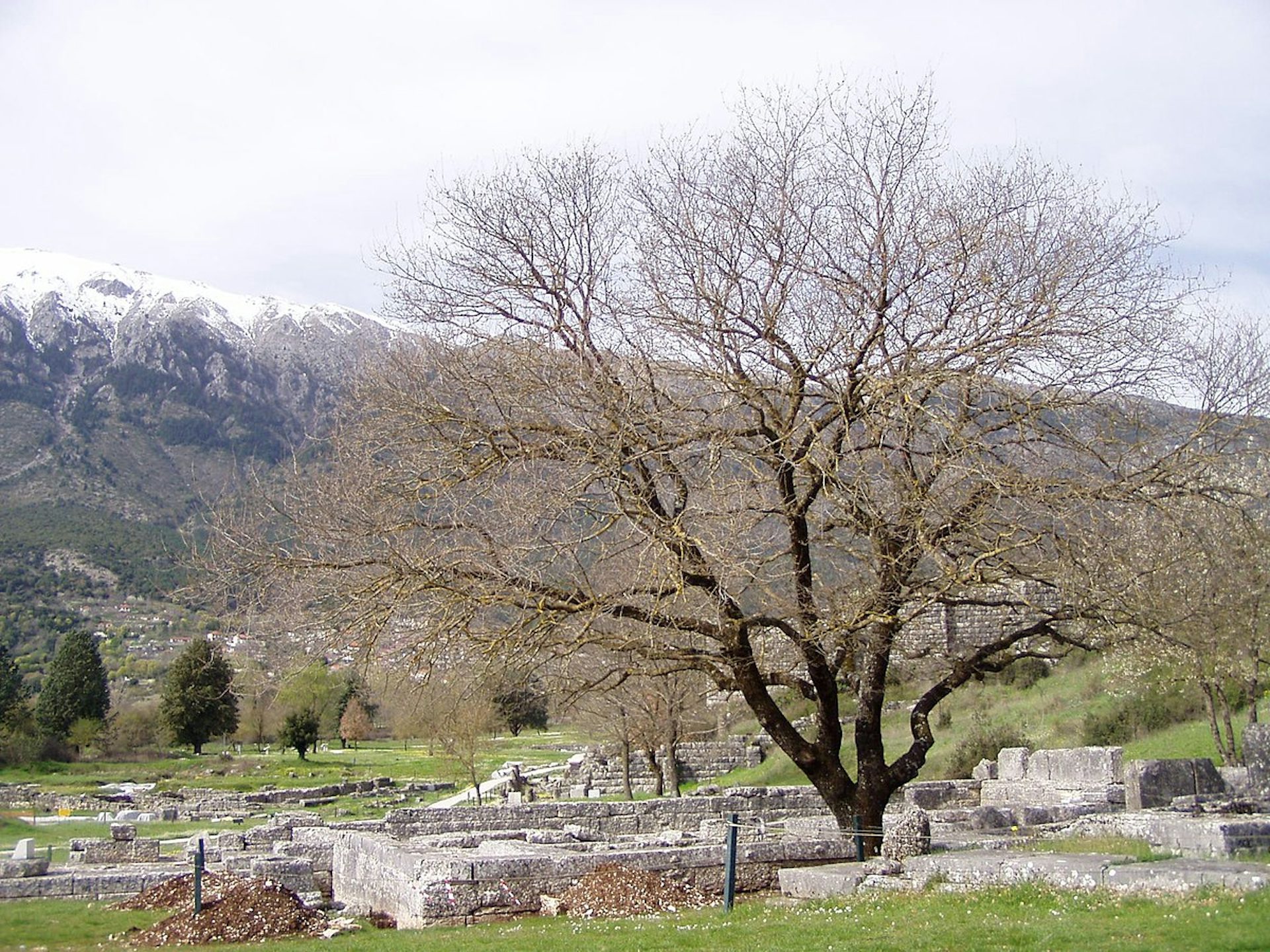Dione

Reverse of coin showing Dione seated on a throne, holding a scepter and raising her veil. Minted under King Pyrrhus of Epirus, ca. 280–278 BCE. Found in Bruttium, Italy.
Classical Numismatics GroupCC BY-SA 3.0Overview
Dione was a mysterious goddess of the Greek pantheon. Though she only plays a minor role in surviving sources on Greek mythology, there is evidence that she was originally far more important. She may have even been the first wife and queen of Zeus, the king of the gods.
Dione herself was either a Titan—a daughter of Uranus (“Sky”) and Gaia (“Earth”)—or an Oceanid—a daughter of the Titans Oceanus and Tethys. She was a lover or consort of Zeus and may have borne him a daughter, Aphrodite (this was the genealogy given by Homer and others, though another familiar tradition claimed that Aphrodite was born from the semen of the castrated Uranus).
Dione was also sometimes connected with Dionysus. Her most important religious center was at Dodona, where she was worshipped alongside Zeus.
Etymology
The name “Dione” (Greek Διώνη, translit. Diṓnē) appears to be simply the feminine form of the name “Zeus.” It is thus connected to the Greek adjective δῖος (dîos), meaning “divine, brilliant,” which is itself derived from the Indo-European root *dieu-, meaning “heavenly, divine” (as seen in the Sanskrit divyá-/div(i)yá-, the Latin divus, etc.).
Pronunciation
English
Greek
Dione Διώνη (Diṓnē) Phonetic
IPA
[dahy-OH-nee] /daɪˈoʊ ni/
Titles and Epithets
As a daughter of Oceanus and Tethys (according to some traditions), Dione was commonly referred to as an “Oceanid” (Ὠκεανίς, Ōkeanís), a simple patronymic meaning “daughter of Oceanus.”
Her individual epithets in ancient literature were fairly generic—the kind of epithets used for all goddesses. She was thus called δῖα θεάων (dîa theáōn), “brilliant among goddesses”; καλή (kalḗ), “beautiful, noble”; and ἐρατή (eratḗ), “lovely.”
In Latin literature, Dione was sometimes identified or confused with Venus, the Roman counterpart of the Greek Aphrodite (who in other sources was Dione’s daughter).[1]
Attributes
Dione was a beautiful goddess with early, obscure origins. In Homer, she appears as one of the divinities living on Mount Olympus alongside the twelve Olympians, the rulers of the Greek pantheon.[2]
When Dione appeared in ancient art—for example, on vase paintings—she was depicted as an attractive woman, often wearing a crown or veil. She was most commonly seen together with her consort Zeus, her daughter Aphrodite, or even as a member of the entourage of Dionysus.[3]
Family
There were at least two versions of Dione’s genealogy. According to Hesiod, Dione was one of the three thousand daughters of the Titans Oceanus and Tethys, the so-called “Oceanids.”[4] But another tradition, reported in Apollodorus’ Library, made her the daughter of the primordial gods Uranus (“Sky”) and Gaia (“Earth”) and thus one of the twelve Titans.[5]

Les Océanides by Gustave Doré (ca. 1860–1869)
Wikimedia CommonsPublic DomainIn the best-known sources, Dione was named as one of the many lovers of Zeus. But some scholars have argued that during an early phase of Greek mythology and religion, it was Dione, not Hera, who was Zeus’ primary wife and queen.
Indeed, Dione seems to have been regarded as a rather important goddess in the earliest works of Greek literature. In the Iliad, for example (written during the eighth century BCE), she lives on Mount Olympus, near Zeus and the other Olympian gods.[6]
According to Homer (among others), Dione and Zeus were the parents of Aphrodite, the goddess of love.[7] But a rival tradition (recounted most memorably by Hesiod) claimed that Aphrodite was born from the foam that bubbled around the severed genitalia of Uranus after Cronus cut them off and threw them into the sea.
In yet another, lesser-known tradition, Dione and Zeus were the parents of Dionysus, god of wine and inebriation.[8] But most sources made Dionysus the son of Semele and Zeus instead.
Mythology
Dione’s mythology is fairly limited and scattered. Little can be said about her origins with any certainty: some traditions made her a Titan, while others made her an Oceanid (see above). Though she was not one of the principal gods of the Greek pantheon, she was closely connected with the Olympians and even lived on Olympus herself.
Dione was probably once an important goddess, as suggested by a few hints in early Greek literature. Hesiod, for example, goes out of his way to include Dione at the beginning of the Theogony, naming her as one of the primary gods his poem will honor.[9]
A few traditions connected Dione with the birth and upbringing of young gods. In the third Homeric Hymn, for example, Dione is named as one of the “chiefest of the goddesses” present at the birth of Apollo and Artemis.[10] In another tradition, Dione is described as one of the “nymphs of Dodona” who nursed the infant Dionysus after he was born from Zeus’ thigh.[11]
Dione has a somewhat more substantial role in Homer’s Iliad: when her daughter Aphrodite is wounded in battle by the Greek hero Diomedes, it is Dione who comforts her. Homer describes how Dione “clasped her daughter in her arms, and stroked her with her hand and spake to her,”[12] reminding Aphrodite of the many times gods had been wounded by mortals before ultimately healing her.

Venus, Injured by Diomedes, Returns to Olympus by Jean-Auguste-Dominique Ingres (ca. 1800–1803)
Kunstmuseum Basel, BaselPublic DomainWorship
Dione’s most important cult center was at the oracle of Dodona in northwestern Greece, sometimes said to have been the oldest of the Greek oracles. There she was worshipped alongside her consort Zeus (whose local cult name was “Zeus Naios”).[13]

Photo of the ruins of the Temple of Zeus at Dodona, where Dione was worshipped alongside Zeus
DerHexerCC BY-SA 3.0At times, Dione was identified with foreign goddesses. The Romans, for example, sometimes conflated Dione with Venus, their version of Aphrodite. The Phoenicians, an ancient Semitic people who inhabited the area now known as Lebanon, may have identified Dione with a goddess called Baaltis, the sister-consort of El and the patron goddess of the Phoenician city of Byblos.[14]
Popular Culture
One of the moons of the planet Saturn is named after Dione.